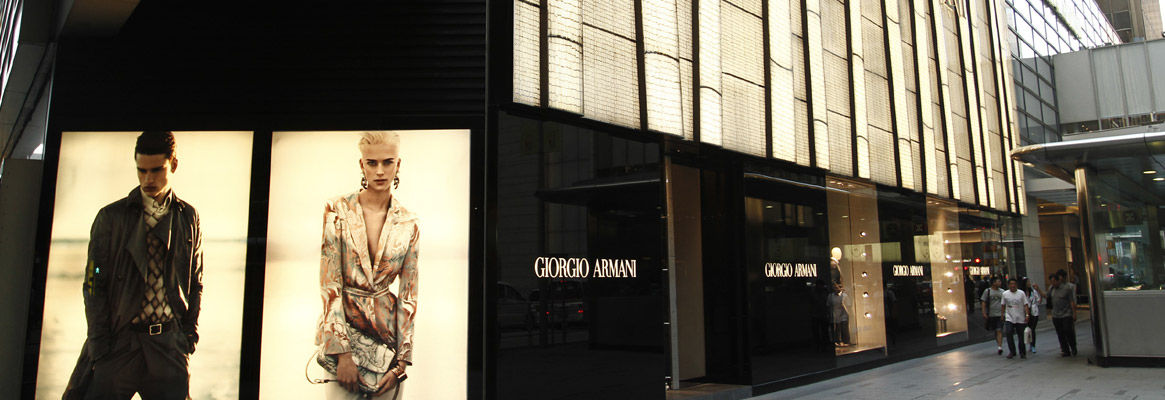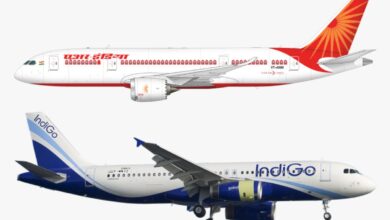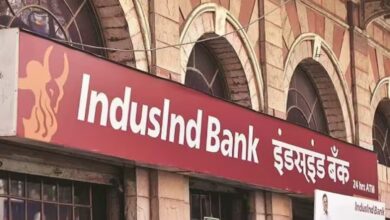What pulls the world’s most luxurious companies to India?

In India, high-end consumers and local partners with substantial financial resources are creating expansion potential for luxury brands. Aditya Birla Fashion Retail (ABFRL) and Galeries Lafayette launched cooperation on Thursday in order to bring the French luxury retailer’s high-end, large-format outlets to India. There will be more than 200 premium brands represented in the flagship shops in Mumbai and Delhi.
Galeries Lafayette, which has locations in Paris, Shanghai, Nice, and Luxembourg, sells a variety of high-end luxury brands like Armani, Balenciaga, Burberry, Bulgari, Calvin Klein, Céline, Christian Dior, Louis Vuitton, and Prada. A contract was recently inked by Reliance Brands Ltd. to introduce the opulent fashion label Balenciaga to India.
Revolve, an international premium lifestyle brand that offers clothing, footwear, and accessories, was also introduced last month, according to an announcement made by the online beauty and fashion marketplace Nykaa. The intention behind the action was to increase the retailer’s worldwide brand portfolio in India.
In order to appeal to local consumers, ultra-premium brands that are currently active in the market are developing collections specifically for India. In order to capitalise on the lucrative wedding season, Louis Vuitton earlier this month unveiled a limited edition line of footwear costing between $75,000 and $1.20 lakh.
Companies said that the luxury consumer in India is maturing and that rising disposable incomes at the top of the income scale are boosting local demand. Others said that the existence of these outlets and the accessibility of brands would likewise act as a market-expansion stimulus. Undoubtedly, in the early 2000s, luxury brands began selling in India, and businesses opened stores exclusively carrying their products. The market, however, developed slowly, and several brands left the nation citing a lack of demand.
The consumer environment has subsequently shifted, however, as a result of increased entrepreneurship, social media usage, and an overall increase in white-collar worker earnings. ABFRL chief executive Ashish Dikshit said on Thursday that the partnership with French luxury retail chain Galeries Lafayette was a “return to fashion” moment for Indian luxury.
The advent of such high-end shops, according to managing director Harminder Sahni of consulting company Wazir Advisors, is clear evidence that India’s luxury sector is about to take off. According to Sahni, a retail brand consultant, “it has been expanding slowly and gradually over the previous 15 years, and now it has reached a stage where the big retail companies like ABFRL and Reliance Retail are acknowledging that the market may be ready. 
The steps made by domestic conglomerates to diversify their portfolios to include luxury brands, according to Sahni, are “forward-looking” investments that will pay off in the long run. According to a previous article, since 2019, businesses like ABFRL and Reliance Retail have announced partnerships with or investments in close to 20 Indian market brands, the bulk of them in the luxury couture sector.
The firm also purchased a 51% share in the Indian luxury couture designer brand Sabyasachi, which is owned by Sabyasachi Mukherjee. ABFRL has invested in high-end fashion designer Tarun Tahiliani. In India, Reliance Brands Ltd. is linked to several well-known brands, including Burberry, Clarks, Coach, Kate Spade New York, Manish Malhotra, and Michael Kors.
According to 2021 predictions by Boston Consulting Group, India’s fashion market is expected to reach 5.7–5.8 trillion by 2024 due to premiumization, increased e-commerce penetration, a greater emphasis on private labels, and entry of foreign brands. There is a significant gap in the availability of premium products, according to several shops. A noticeable increase in the number of Indian customers seen at high-end stores abroad, according to Rahul Prasad, managing partner of boutique M&A and consultancy company Pike Preston Partners (Asia) Ltd, is a sure sign of underlying demand.
“The Indian customer is very, very evident whether you visit Selfridges or Galeries Lafayette. We believe that post-pandemic “pent-up demand” is no longer the driving force. Simply consumerism, he declared. Indians are among the top 5 customers at the Galeries Lafayette store on Boulevard Haussmann in Paris, according to luxury industry experts. However, the pandemic and ensuing travel ban have forced some affluent shoppers to return home.
Indians used to purchase luxury goods abroad for specific brands, according to a top executive at a company specialising in bringing international brands to India, in part due to shoddy management and high prices there.
“These turned off a lot of Indian clients, “He spoke, asking to remain unnamed. They believed the world outside to be more affordable, but they came to the realisation that life here is actually rather good. Due to the tariffs, India is still more costly, but not by an excessive amount “Added he.
Adwaita Nayar, co-founder of Nykaa and CEO of Nykaa Fashion, stated in an earlier interview that the premium clothing industry in India remains mainly untapped. “It is sad that people have to travel to buy these things since India lacked the correct brands for such a long time. Thus, it’s all a part of the change to providing the proper product to Indian consumers, according to Nayar, who made this statement in an interview in September.
Growth forecasts
India’s economy is now considerably more robust. The signs are all in your favour. All of these metrics—the budget deficit, inflation index, current account deficit, and foreign exchange reserves—are improving and driven by growth. The projected annual percentage growth rates in India are the highest among the BRICS nations, at 7.5 percent, compared to 6.3 percent in China, 2.1 percent in South Africa, and almost nothing in Brazil and Russia.
Status and brand value globally
The seventh most valuable country brand is India. India has climbed one spot in the list of the most valuable national brands thanks to a 32 percent increase in brand value to $2.1 billion. Furthermore, this increase is the biggest among the Top 20 nations on the list. The nation brand valuation follows a complicated process and is based on five-year forecasts of sales for all brands in each nation.
For all revenues, the gross domestic product (GDP) is used as a stand-in. Brazil, Russia, China, and South Africa all saw declines in their respective brand valuations while India is the only BRICS country to have seen an increase. India is also the second-most valuable of these developing nations’ economies, behind China, and is followed by Brazil, Russia, and South Africa.
Indian consumer environment
Five separate categories have been used to categories Indian consumers. Even while the upper class, at the top of the pyramid, makes up only 4% of the population overall, the absolute numbers are simply too alluring for any luxury company to ignore. By 2025, these figures are projected to increase from the current 10 million to 26 million homes. Additionally, a 1.7-fold increase in overall average household income is anticipated by 2025. Any global retail brand would find this to be a compelling proposition in and of it.
An increase in HNIs and UHNIs
India has moved up the list of the Top 20 nations, according to Credit Suisse’s 2015 Global Wealth Report, as the country’s population of ultra-high-net-worth (UHNW) persons has increased by 100 since mid-2014 to 2,100. In the Asia-Pacific area, India has the fourth-highest concentration of millionaires. In addition, it is predicted that HNI wealth in India would expand thrice during the next ten years. From $949 billion in 2010, it is anticipated to reach $2.3 trillion in 2020. High-net-worth individuals’ (HNIs’) wealth will increase by 94 percent in India by 2020 compared to 74 percent in China, giving luxury retailers appealing opportunities.




